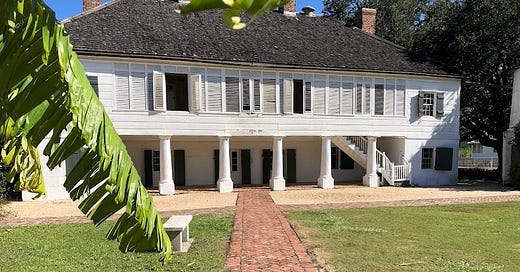Whitney Plantation: Where the Walls Still Speak
One of the most important historical sites in the South isn’t about the wealthy. It’s about the people who paid the price.
There’s a place just outside of New Orleans that doesn’t trade in moonlight and magnolias. It’s not about mint juleps on the veranda or "Gone with the Wind" fantasies. No, Whitney Plantation does something much braver. It tells the story of slavery in the South, honestly, directly, and with reverence for the people whose names history tried to erase.
A Plantation Like No Other
The land that is now Whitney Plantation was first developed in 1752 by German immigrant Ambroise Haydel, who called it “Habitation Haydel.” Over time, the Haydel family became one of the most prosperous enslavers in Louisiana, profiting from indigo and sugarcane. By the mid-1800s, Marie Azélie Haydel, matriarch of the family, was one of the largest enslavers in the state.
After the Civil War, the property was renamed Whitney Plantation by its new owner, Bradish Johnson, who named it after his grandson. But even as ownership changed, the stories of the people who lived and labored there were largely ignored—until recently.
That changed in 1999, when New Orleans lawyer and real estate developer John Cummings bought the decaying site. Unlike most buyers of historic plantations, he wasn’t interested in restoring it to some romanticized ideal. He spent more than $10 million of his own money and partnered with Dr. Ibrahima Seck, a Senegalese scholar of slavery and memory, to create a museum grounded in truth and historical accuracy.
In 2014, the Whitney Plantation Museum opened as the first, and still the only, museum in the United States dedicated exclusively to the lives of enslaved Africans and their descendants.
What You’ll See (and Feel) at Whitney
Visiting Whitney isn’t your average plantation tour. You won’t find hoop skirts or wedding packages. There’s no glorification of the “Old South.” Instead, you walk in the footsteps of the enslaved. You hear their words. You see their names. You feel their absence and presence in every structure.
Highlights of the tour include:
The Wall of Honor: A massive granite installation inscribed with the names of over 350 enslaved people who lived on the plantation, along with hundreds of others enslaved across Louisiana.
The Field of Angels: A memorial dedicated to the 2,200 enslaved children who died before the age of three in St. John the Baptist Parish. Their names and ages are carved into stone, many as young as “2 weeks,” “1 year,” “unknown.”
The Antioch Baptist Church: Moved to the property from Paulina, Louisiana, this restored 19th-century Black church is now a sacred storytelling space used for ceremonies and reflections.
The Children of Whitney Statues: Life-size clay sculptures of enslaved children, based on real narratives collected during the WPA’s 1930s Federal Writers’ Project. They sit on wooden benches in the old slave quarters—silent, watchful, and unforgettable.
Original slave cabins, the Big House, and outbuildings: The tour includes preserved 18th- and 19th-century structures where enslaved people lived and worked. Guides provide historical context to how these buildings functioned as part of the plantation economy.
Tours are primarily self-guided, using a mobile app with GPS-triggered audio narration. But guided tours are also available and they are deeply moving. These tours don’t just give dates and data. They give depth. Many are led by local guides who have studied the documents, walked the fields, and, in some cases, may even have ancestral ties to the region’s enslaved communities.
You won’t leave this place the same.
The Bigger Picture and a Looming Threat
Whitney Plantation isn’t just a museum. It’s a counter-narrative. It’s a space of truth in a region where many other plantation sites still shy away from the realities of slavery—or gloss over it altogether. It reminds us that history can heal, but only when it’s told honestly.
In recent months, Whitney’s mission has come under pressure. Federal funding that helped support educational programming and future exhibits, like one focused on resistance movements among enslaved people, was pulled in 2025 as part of broader cuts to diversity, equity, and inclusion initiatives.
While the museum is still operating and remains open to the public, these cuts highlight how fragile the work of historical truth-telling can be in a climate where some would prefer we forget.
But if Whitney Plantation has taught us anything, it’s that memory is resilient. And the descendants of those once silenced are speaking, writing, guiding, and preserving the past in a way that ensures it cannot be buried again.
Final Thoughts
Whitney Plantation is not a feel-good experience. It’s a feel-everything experience. Grief. Reverence. Anger. Awakening. But above all it’s a place that offers the gift of knowledge. And once you know, you can't un-know.
So if you're ever driving River Road, don’t just look at the sugarcane swaying in the breeze. Stop at Whitney. Listen to the wind. Listen to the names. Let the truth settle into your bones.
Because the past isn’t past. Not here. Not in Louisiana. Not in America.
Plan your visit. Share the story. Support the truth.
Whitney Plantation needs us—because history doesn’t preserve itself.
https://www.whitneyplantation.org




